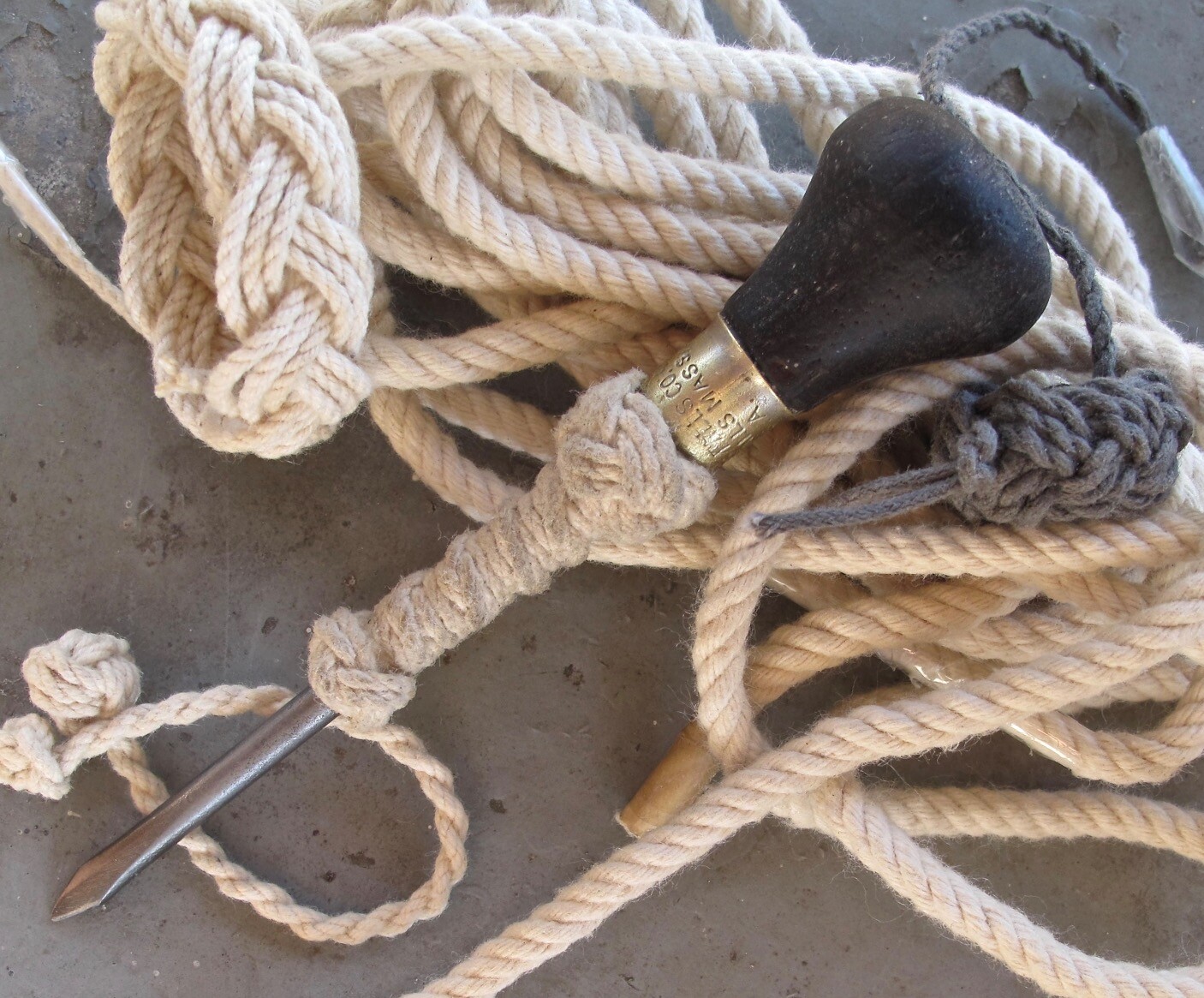It used to be that Stockholm Tar was found everywhere. Now it seems like it's mostly been forgotten, and that's kind of sad. We've lost a ton of generational knowledge over the years, and I'm always happy to see guys like Mikko Snellman keeping some of it alive. I was first introduced to Marlinspike Seamanship as a little kid and have been fascinated by it ever since. Of course, after reading Robinson Crusoe, what good boy wouldn't do a deep dive into all things nautical?
Stockholm Tar is one of those things that you live without until you find it... and then wonder how you ever lived without it. While it's lousy as a preservative on wood you're going to eat with - nothing worse than pine flavor in your morning coffee - it's great for anything that's not a kuksa or spoon!
I've gotten away from using parachute cord and other plastic ropes, for the most part. Tarred marline, for example, is plenty strong enough for 99% of what we do in the woods, and it rots away to nothing in just a few years. Why snip off a few inches of plastic paracord that'll be in the landfills for generations to come when tarred jute, cotton, hemp, or sisal will get the job done just as well?
Mikko's channel is a veritable goldmine of ideas for the bushcraft world.
I don't make my own Stockholm Tar simply because it's more economical for me to buy it. If I ever run across a downed pine or spruce, I might give it a go, though. You can never have too much tar around the shop, that's for sure.
Stockholm Tar is one of those things that you live without until you find it... and then wonder how you ever lived without it. While it's lousy as a preservative on wood you're going to eat with - nothing worse than pine flavor in your morning coffee - it's great for anything that's not a kuksa or spoon!
I've gotten away from using parachute cord and other plastic ropes, for the most part. Tarred marline, for example, is plenty strong enough for 99% of what we do in the woods, and it rots away to nothing in just a few years. Why snip off a few inches of plastic paracord that'll be in the landfills for generations to come when tarred jute, cotton, hemp, or sisal will get the job done just as well?
Mikko's channel is a veritable goldmine of ideas for the bushcraft world.
I don't make my own Stockholm Tar simply because it's more economical for me to buy it. If I ever run across a downed pine or spruce, I might give it a go, though. You can never have too much tar around the shop, that's for sure.



